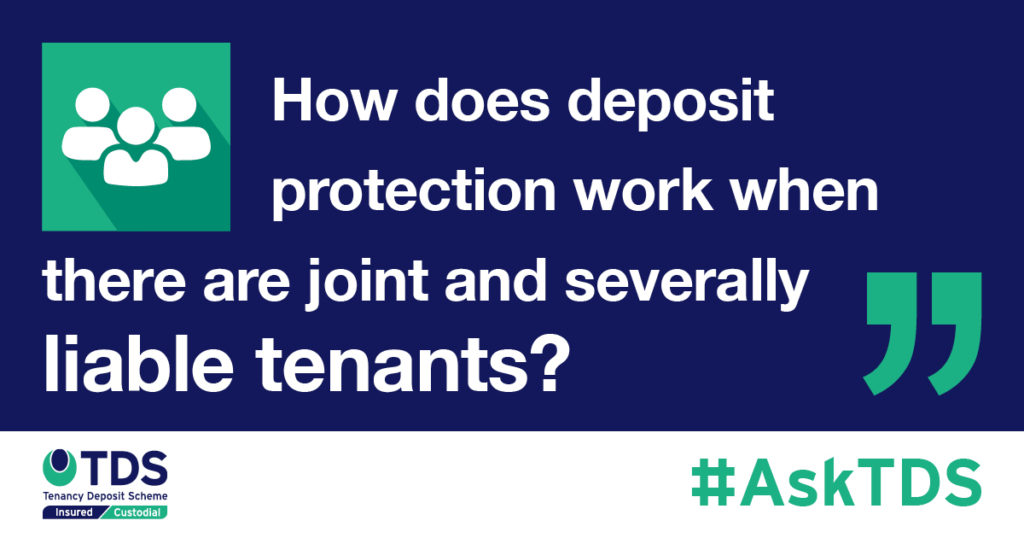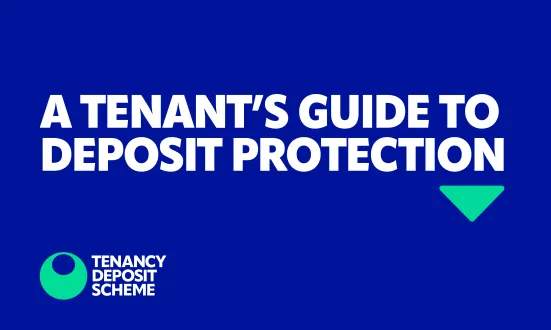The Tenancy Deposit Scheme (TDS) is a government approved scheme for the protection of tenancy deposits; we offer both insured and custodial protection. We also provide fair adjudication for disputes that arise over the tenancy deposits that we protect. This article has been written in response to a landlord’s query: “How does deposit protection work when there are joint and severally liable tenants?”
Joint and several liability essentially means that each tenant is responsible for the action and inaction of themselves, and the other tenants. So, for example, each tenant could be pursued for the full rent on the property, even if they are up to date on their share.

 One of my tenants hasn’t paid last month’s rent; can I recover it from the joint deposit?
One of my tenants hasn’t paid last month’s rent; can I recover it from the joint deposit?
While tenants will likely think of the rent in terms of their share, the collective group of tenants are responsible for the total amount of rent. It is up to them to divide that total amount between them, so long as the full amount is paid.
If the rent is £1000, it doesn’t matter whether the tenants split the rent between them 50:50, 60:40 or any other way, so long as the full £1000 is paid. Therefore, if one tenant doesn’t pay their ‘share’ then all the tenants are liable for the outstanding amount.
The deposit should be considered in the same way. It doesn’t matter if each tenant contributed to the deposit, or one tenant paid the full amount, so long as the full amount was paid. This money is then held against the obligations of the tenants under the tenancy agreement, such as paying rent, and therefore could be used to cover any outstanding rent from any tenant.
 One of my tenants has a really good guarantor; can I pursue them for another tenant’s rent?
One of my tenants has a really good guarantor; can I pursue them for another tenant’s rent?
As with the rent, the guarantor is not liable for a ‘portion’ of the rent, but for the full rent amount. For example if Tenant A and B both pay 50% of the rent, and both have guarantors, but a few months into the tenancy Tenant B’s guarantor disappears and Tenant B stops paying rent, tenant A and their guarantor can be pursued for the outstanding amount, as both tenants and guarantors are liable for the full amount, not only a portion of it.
 How are joint and severally liable claims considered by Adjudicators?
How are joint and severally liable claims considered by Adjudicators?
Where a claim is made on the deposit, and it is disputed by the tenant, the adjudicator will look for – at a minimum – the tenancy agreement and a rent statement showing rent due, due date, payments made, dates received, method of payment, and any outstanding balance. Supplementary evidence may include correspondence from the tenant(s), or anything else the landlord may feel is material to the claim.
It is important to note that deposit protection schemes cannot consider counter-claims, or set-off issues, such as the tenant seeking compensation from the landlord. We are also unable to consider tenants’ claims against each other. In these cases tenants would need to seek legal advice. You can read our blog on the subject here.
Tenants who are joint and severally liable will need to stop thinking in terms of ‘their share’ as the property/rent as a whole is their responsibility. Landlords are entitled to pursue any/all tenants even if only one person is responsible for unpaid rent. The same is true for damage, negligence, cleaning, etc. Even if it was the actions or inactions of only one tenant, all joint tenants are responsible for compensating the landlord.
Other news stories


